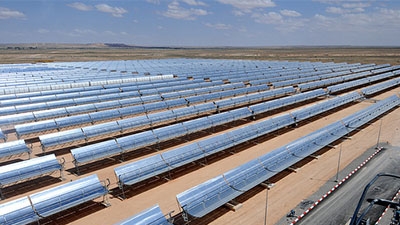Objectives
The objective of the Scaling up Renewable Energy Program (SREP) Armenia Investment Plan (IP) is to catalyze private investment in renewable energy technologies which, for lack of experience, high capital costs and a variety of other reasons, have not previously been considered as options in the country.
SREP support can help to gradually introduce geothermal energy and utility-scale solar PV by:
- Absorbing some of the project development risk on geothermal power, through subsidization of exploratory wells at Karkar geothermal site;
- Helping to finance the country’s first 40-50 MW of utility-scale solar PV projects through private investors, while minimizing the tariff-impact by using SREP funds;
- Promoting wider penetration of geothermal heat pumps and solar water heaters for residential, industrial, and other commercial use.
The US$ 40 million of SREP funding is expected to catalyze roughly 4.5 times as much investment, most of it from the private sector (as equity or debt), and the commercial lending windows of the Multilateral Development Banks (MDBs) including ADB, EBRD, and WBG.
Key Expected Results
The above projects will foster larger-scale development of the above technologies. The main outcomes expected from the SREP Armenia IP are as follows:
- Improvement energy security by increasing the proportion of domestic renewable energy in the energy mix, including 40-50 MW of new utility-scale solar power capacity, heat pumps and solar water heaters, and paving the way for 28 MW potential geothermal power plant at Karkar site if exploratory drilling confirms availability of the resource.
- Promotion and scale-up of utility-scale solar and geothermal power through private investments. This will also facilitate R&D which has traditionally been a focus of researchers and academicians in Armenia.
- Contribution to reduction of 400 MW of impending supply capacity gap to meet forecast demand.
- Creation of jobs related to the construction/installation, operation and maintenance of renewable technologies. Education of the workforce in the deployment of these technologies.
- Reduction of greenhouse gas (GHG) emissions as compared to the business-as-usual scenario.
About SREP
The Scaling up Renewable Energy Program (SREP) in Low Income Countries is a targeted program of the Strategic Climate Fund (SCF), which is one of two funds within the framework of the Climate Investment Funds (CIF). The SREP was established to scale up the deployment of renewable energy solutions and expand renewables markets in the world’s poorest countries.
The SREP aims to pilot and demonstrate the economic, social, and environmental viability of low carbon development pathways. SREP financing supports technologies such as solar, wind, bio-energy, geothermal, and small hydro technologies. It stimulates economic growth by working with governments to build renewable energy markets, engage the private sector and explore productive energy use.
